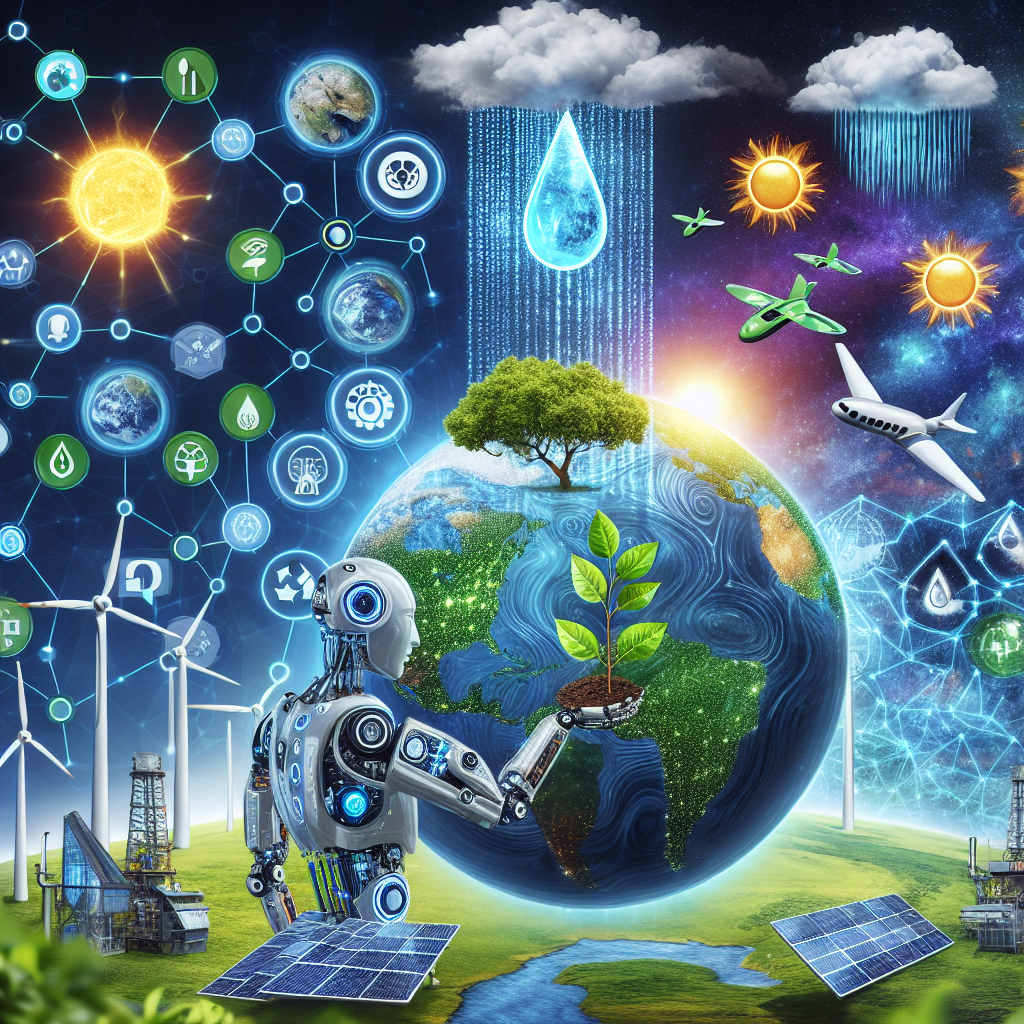In recent years, the world has witnessed a dramatic increase in the use of artificial intelligence (AI) and automation technologies across various industries. These technologies have revolutionized the way businesses operate, improving efficiency, productivity, and accuracy. However, AI and automation also have the potential to play a significant role in addressing one of the most pressing issues of our time – climate change.
The impact of AI automation on climate change solutions is multi-faceted, with the potential to drive innovation, improve data analysis, and optimize resource management. In this article, we will explore how AI and automation technologies are being used to address climate change and create a more sustainable future.
1. Improving Energy Efficiency
One of the key ways in which AI automation is being used to address climate change is through improving energy efficiency. AI-powered systems can analyze data from sensors and other sources to identify patterns and trends in energy consumption, allowing businesses and individuals to optimize their energy usage and reduce waste. For example, AI algorithms can automatically adjust heating and cooling systems based on occupancy levels, weather conditions, and other factors to minimize energy consumption.
In addition, AI automation can also help optimize energy production and distribution. For example, AI algorithms can predict energy demand fluctuations based on historical data and weather forecasts, allowing energy providers to adjust production levels accordingly. This can help reduce the reliance on fossil fuels and increase the integration of renewable energy sources into the grid.
2. Enhancing Climate Data Analysis
Another way in which AI automation is contributing to climate change solutions is through enhancing climate data analysis. AI algorithms can process vast amounts of data from satellites, sensors, and other sources to identify trends, patterns, and anomalies in climate data. This can help scientists and policymakers better understand the impacts of climate change, predict future trends, and develop more effective strategies for mitigation and adaptation.
For example, AI-powered systems can analyze satellite images to track deforestation, monitor changes in sea levels, and predict the spread of wildfires. This data can then be used to inform decision-making processes and develop targeted interventions to address these issues.
3. Optimizing Resource Management
AI automation is also being used to optimize resource management and reduce waste. For example, AI algorithms can analyze data from smart sensors and IoT devices to track resource usage, identify inefficiencies, and recommend ways to improve resource utilization. This can help businesses and organizations reduce their environmental impact, minimize waste, and save costs.
In the agriculture sector, AI automation is being used to optimize water usage, reduce pesticide use, and improve crop yields. AI-powered systems can analyze soil data, weather patterns, and other factors to recommend the optimal amount of water and nutrients for specific crops, reducing water waste and chemical runoff.
In the transportation sector, AI automation is being used to optimize traffic flow, reduce emissions, and improve fuel efficiency. AI algorithms can analyze real-time traffic data, weather conditions, and other factors to optimize routes, reduce congestion, and minimize fuel consumption.
4. Facilitating Climate Modeling and Prediction
AI automation is also facilitating climate modeling and prediction, helping scientists and policymakers better understand the complex interactions between different climate variables. AI algorithms can analyze historical data, simulate different scenarios, and predict future climate trends with greater accuracy than traditional modeling techniques.
For example, AI-powered climate models can simulate the impacts of different emission scenarios on global temperatures, sea levels, and extreme weather events. This information can then be used to inform policy decisions, develop adaptation strategies, and prioritize mitigation efforts.
FAQs:
Q: How can AI automation help reduce carbon emissions?
A: AI automation can help reduce carbon emissions by optimizing energy production and distribution, improving energy efficiency, optimizing resource management, and facilitating climate modeling and prediction.
Q: What are some examples of AI-powered climate change solutions?
A: Some examples of AI-powered climate change solutions include smart energy management systems, precision agriculture technologies, traffic optimization algorithms, and climate modeling tools.
Q: How can businesses and organizations leverage AI automation to address climate change?
A: Businesses and organizations can leverage AI automation to improve energy efficiency, optimize resource management, reduce waste, and develop more sustainable practices. By adopting AI-powered technologies, businesses can reduce their environmental impact and contribute to global efforts to combat climate change.
In conclusion, the impact of AI automation on climate change solutions is significant and far-reaching. By leveraging the power of AI and automation technologies, we can drive innovation, improve data analysis, optimize resource management, and facilitate climate modeling and prediction. These technologies have the potential to revolutionize the way we address climate change and create a more sustainable future for generations to come.

